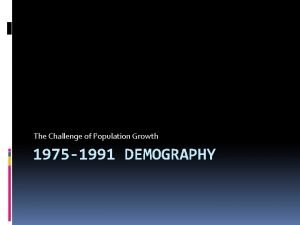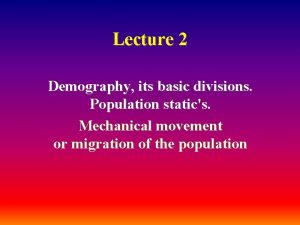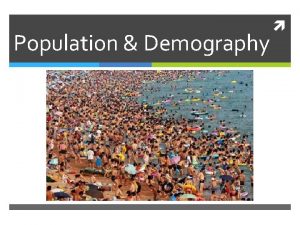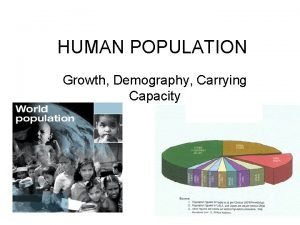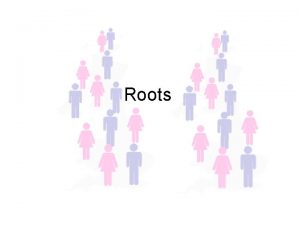The Challenge of Population Growth 1975 1991 DEMOGRAPHY











- Slides: 11

The Challenge of Population Growth 1975 -1991 DEMOGRAPHY

Demographic Transition The population of Europe almost doubled between 1850 and 1914 Put pressure on rural land to produce enough food, and on urban housing & institutions Forced migrations to the west, developing the Americas Thomas Malthus: population growth will exceed food production; we will starve

Demographic Transition However, population growth slowed after WWII (minus baby boom in US) Cultural changes: female employment, later age of childbearing, fewer kids, family planning, older age of marriage Lower # births in developed countries, high # births in developing ones = almost zero population growth In developing nations, they actually encouraged large families to grow population, increasing their power But the economies of the 70 s and 80 s shocked their countries and power did not come



Negative Population Growth: Europe


Reasons for Developing Demographics Fertility is declining in developing areas now HIV/AIDS Poorly funded public health Still higher rates than developed countries Ethnicities from developing countries, living in developed countries, still experiencing high birth rates—cultural? Culture dictates some aspects of fertility— which ethnicities have the most kids?

Industrialized Countries Current fertility levels are so low, in some countries, without immigration, population will seriously decline Japan: avg. # kids is 1. 39; Italy: 1. 2 Some European countries give tax incentives for children Life expectancy is increasing as fertility is dropping—people staying around longer Happening more slowly in US—immigration

Scary Demography 95% of all future population growth will be in developing nations Muslim, African, and South American countries are growing fastest India and China continue to grow—they contain 1/3 of the world’s population in 2 countries Over ½ Pakistan’s population is under 16

Results Growing gap between rich and poor 1 billion people live on less than $500 a year; concentrated in Africa, Latin America, and Asia Growing gap within nations as well; regional �The wealthiest 1% in the US own 30% of the nation’s wealth; our poorest live on less than $5000 a year Environmental threats from population boom; agricultural and industrial expansion Developing countries hit hardest with this, forcing industrialization Efforts to improve environment have been moderately successful in developed countries Collapse—Jared Diamond strikes back…
 Demographic data definition
Demographic data definition 1991-1975
1991-1975 Cso business demography
Cso business demography Components of demography
Components of demography Elements of demography
Elements of demography Acronym antonym
Acronym antonym Demography ap human geography
Demography ap human geography Static demography
Static demography Difference between a sample and a population
Difference between a sample and a population Welcome to teen challenge uk - teen challenge uk
Welcome to teen challenge uk - teen challenge uk Chapter test a chapter 4 population ecology answer key
Chapter test a chapter 4 population ecology answer key Population ecology section 1 population dynamics answer key
Population ecology section 1 population dynamics answer key

